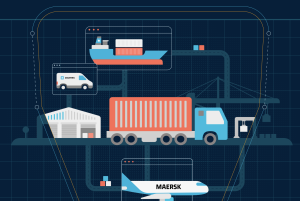 In his frequent conversations with procurement professionals, it’s become clear to Alex Saric (Vice President of Business Networks Marketing at SAP) that the importance of increasing collaboration with suppliers is well recognised, but, when we start to discuss what that means in practice there is far less clarity.
In his frequent conversations with procurement professionals, it’s become clear to Alex Saric (Vice President of Business Networks Marketing at SAP) that the importance of increasing collaboration with suppliers is well recognised, but, when we start to discuss what that means in practice there is far less clarity.
For example, few seem to understand how to leverage business networks, a key enabler of such collaboration, to drive greater value. After all, in today’s Networked Economy, we are more connected and dependent on our trading partners than ever before.
Based on his experience, Saric has identified top ways that procurement professionals should leverage business networks.
1. Automate P2P
Business networks let organisations easily connect with their trading partners. You should ensure your purchasing systems (and your e-invoicing for that matter – P2P is all one process ultimately) are connected to a business network so that as many of your suppliers and catalogues as possible are available in those systems. This will ensure your orders and invoices are processed electronically, with automated three- or four-way matching, in a ‘touchless’ manner, says Saric. This:
o improves compliance;
o reduces errors/exceptions;
o increases transparency and control; and
o ultimately saves you a ton of time to focus on higher value-add activities.
But the best business networks can do much more than digitise purchase orders and invoices.
2. Improve sourcing
As much as 40% of sourcing time is typically consumed by discovering and qualifying suppliers, notes Saric. You can shave the bulk of that time by using a sourcing solution with integrated business network discovery. Not only can you reduce cycle times by cutting down supplier discovery, you can also:
o decrease costs through more competitive auctions;
o reduce risk via network insights, such as third-party financial/risk data and peer reviews; and
o meet non-cost objectives such as CSR, green and local supplier requirements without sacrificing cost.”
3. Increase spend under management/control
It’s amazing how much time is spent trying to optimise auctions to squeeze an extra percent in price reductions, says Saric. This no doubt saves money, but there is a limit to how much you can squeeze your suppliers, and squeezing too much increases supply risk. The much bigger opportunity in most companies is in all those unmanaged categories and purchases. By connecting your purchasing systems to the right business network, you can bring a new level of control and visibility over that spend.
o Spot buy capabilities let users buy specific categories from online catalogues from qualified suppliers. So, if your contracted supplier is out of an item, or a category is uncontracted, you can still drive purchases through your purchasing system.
o For more complex purchases, spot quote capabilities let users quickly obtain several quotes, select one and place the order. You want employees to adopt your systems? Take away their excuses to go around them.”
4. Innovate
Supplier-driven innovation need not be limited to a handful of strategic suppliers for a handful of categories, explains Saric. Crowdsource your requirements (rather than bidding on exact specifications) over a business network and let potential suppliers offer creative ways to meet your requirements, potentially offering a much better solution AND reducing costs more than an auction for a pre-defined specification could. A business network extends the universe of suppliers that can offer their innovative approaches.
This is hardly an exhaustive list, but it is a good start.
“Ultimately, today’s Networked Economy, is creating entirely new ways of conducting smarter business. Business networks are a key enabler for procurement,” says Saric.
A new infographic produced by SAP shows how Patrick, a fictitious purchasing manager, leverages a business network to do his job better and drive a range of company benefits. Let’s all stop talking and start doing. Just like Patrick.


























